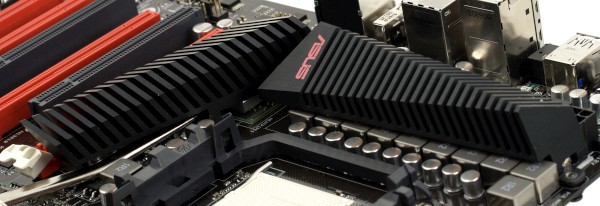As you know, ASUS' Republic of Gamers products feature top-notch parts to build uncompromised gaming rigs. Motherboards and graphics cards of the series have personal names in addition to alphanumeric markings. They also have various proprietary features usually meant for expanding overclocking potential and squeezing out maximum performance. And of course such motherboards have custom design that you cannot confuse with anything else.
Design
Though the AMD 890FX chipset, like the preceding AMD 790FX, supports up to four graphics cards in Quad CrossFire, this feature isn't in much demand these days. So ASUS believes that you will most likely have a couple of dual-GPU graphics cards instead. Thus, the first graphics slot has 16 PCI Express lanes -- as well as the third one. But the latter can go halves with the second graphics slot, if you have three single-GPU graphics cards. Finally, the fourth graphics slot has 4 PCI Express lanes and can accomodate an auxillary expansion card for physics acceleration or something like that.
Note that, for a dual-channel memory configuration, you must install memory modules into the 1st and the 3rd memory sockets.
There is a number of contacts along the edge for monitoring key voltages with a multimeter, including CPU, memory, chipset, HT bus, etc. This may come in handy at overclocking competitions, for example.
Onboard power and reset buttons are not a surprise these days. These are even found on inexpensive motherboards. But high-end motherboards offer more buttons, and in this case you can also load an overclocker BIOS profile or unlock CPU cores.
The cooler is quite original. But, design aside, it kind of hints that neither chipset nor CPU VRM need extreme cooling. The latter is redundant and highly efficient, so it doesn't dissipate much heat. Hence low-profile heatsinks and thick fins.
The CPU VRM has 10 phases (2 are powering the Northbridge integrated into GPU), 2 highly efficient Low RDS (on) MOSFETs per phase. There are 10 x 820µF and 3 x 270µF capacitors, all solid, made in Japan, with the rated MTBF of 500000 hours at 65°C. Without a doubt, ASUS Crosshair IV Formula can work with 140W TDP processors, even though many newer high-end CPUs only have 125W TDP.
Write a comment below. No registration needed!



